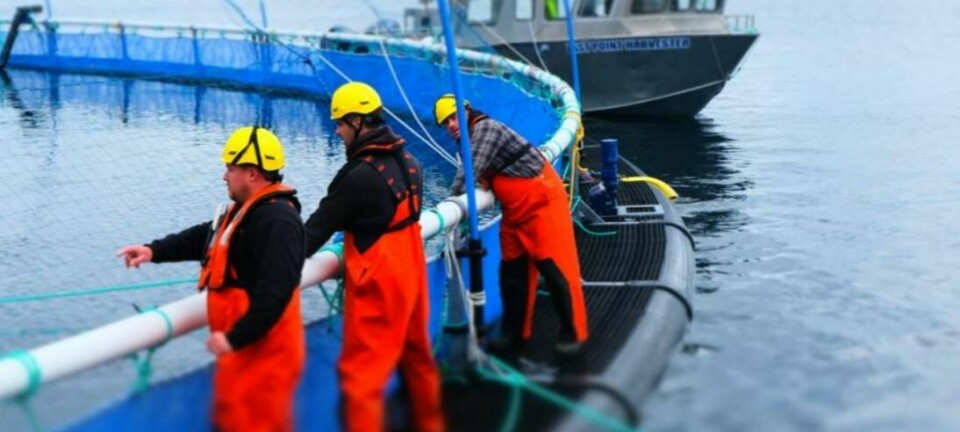The mod squad
By Christian Pérez-Mallea

Reinder Sijtsma obtained his PhD in nutrition at the University of Wageningen, the Netherlands. Since 1989 he has worked in the animal nutrition specialist Nutreco and its subsidiary Hendrix, in various positions in R&D, nutrition, quality assurance and food safety, gathering a wide experience in all these areas. He is currently Director of Quality, with responsibility for Corporate-level policies for food quality and safety, regulatory affairs and intellectual property management. He is a member of various committees and international feed associations’ directories, including the International Feed Industry Federation (IFIF). In a recent visit to Chile for Skretting’s "Towards 2020, Trends and Opportunities for Chilean Aquaculture" conference the specialist talked about several controversial issues regarding the ingredients used in animal nutrition, especially GMOs. Sijtsma considers that GMOs may be a good option in the near future, considering that soon there will be close to 9 billion people to feed worldwide. However, he recognizes that in some European markets there is a strong concern about the use of such GM raw materials. He also took the time to talk about AquaAdvantage salmon, fish genetically modified by the company AquaBounty, which could become the first GM animal approved for human consumption in the United States.
Do you see a place for animal by-products in the formulation of salmon feeds? Animal by-products in general are highly nutritious for salmonids both in terms of macronutrients and micronutrients. Such products can play an important role in the sustainable development of aquaculture, provided that they are produced in a safe way from safe slaughterhouse materials. Even the European authorities came to this conclusion, based on the thorough scientific risk assessments from the European Food Safety Authority. As a result, several animal by-products, with the exception of ruminant by-products, can again be used in the European fish feed industry. However, the market is reluctant to use such products. On the one hand the acceptance of retailers seems to be an issue. On the other hand the European fish feed industry has challenges to fulfil all requirements as stated in the EU legislation. The latter includes a zero-tolerance policy for the low level presence of ruminant tissues in animal by-products. In practice this has resulted in problems, as the present analytical techniques used for monitoring and official controls by authorities continuously lead to debate with respect to the presence of ruminant tissues. As a result, European fish feed producers prefer to avoid using animal by-products.
What GMO ingredients are used in the formulation of salmon feeds? The use of GM ingredients in feeds for salmonids is strongly dependent on market requirements. In the EU the use of such ingredients in feeds for salmonids is negligible. The reason is the fact that several European retailers have a strong preference for non-GMO feeds and the fish feed industry is respecting this. Outside the EU the use of products derived from GM soy, corn and rapeseed is common in fish feeds. In particular nowadays with the trend to reduce the levels of marine products in feeds for salmonids, the proportions of GM ingredients can be substantial. Such GM products have been approved for this use and are absolutely safe.

Are there any changes in the market perception regarding inclusion of GMOs in salmon diets? In a growing number of countries, GMOs have become a major consumer and societal issue. This is particularly the case in EU countries such as Germany, Italy, Poland, Austria and Greece. In other countries, both inside and outside the EU, a small but growing number of consumers have some doubts. Among these countries are the UK, Spain, Japan, and even the USA.
When do you think GMOs will become more commonplace in the formulation of diets? It is difficult to predict when and if this will happen, but the cultivation of GM crops is gradually replacing the cultivation of conventional crops. This is creating tension, also for producers of feed. The supply of non-GM raw materials is stagnating and the price difference with GM crops is growing. The latter may be an argument for consumers to accept GM crops, in particular when at the same time the communication about GMOs has improved acceptance.
Is there any difference in the public perception of GMO ingredients that are intended for animal consumption compared to direct human consumption? Again the situation in the EU is interesting. Until now, the situation in the EU market has been that around 85% of the animal feeds in the market were labelled as GMO (mainly because of the presence of GM soy), while almost none of the foods in the shop were labelled GMO (because they don’t contain GMOs). This seems to be a contradiction but can easily been explained by the fact that animal products such as meat, eggs and dairy are out of the scope of GMO labelling even when the animals were fed GMOs. Gradually some consumer organisations realize that this is weird. As they can’t change legislation easily, they have pushed in certain EU member states the retailers to change their supplier requirements. Actually, in Germany the joint retailers recently decided to sell from next year on only poultry meat from animals fed non-GM feed.
What kind of GMOs are used in the formulation of salmon feed? First, second or third generation? So far, the only GMOs approved and widely cultivated are the ones with agronomic modifications – ie crops resistant to pests and herbicides. However, in the coming years, more GM crops with agronomic traits can be expected – eg drought- and salt-resistant crops. In addition, GM crops with modified nutrient levels can be expected – eg soy with a high level of EPA/DHA. Right now GM crops (soy, corn and rapeseed) resistant to pests and herbicides are often used in feeds for salmonids. There is a good chance that AquaBounty eggs will be approved by the FDA. What could be the consumer response to such a product? It is still a question mark whether this GM salmon will be approved and, if so, when. Nevertheless, it would be the first GM animal approved for human consumption. It is difficult to predict how consumers will react. For sure, in markets where consumers already have difficulties with the acceptance of GM crops, it won’t be successful. However, in markets where consumers have fewer hesitations with GM crops and GMOs in general it might be successful. The future will tell…





















































